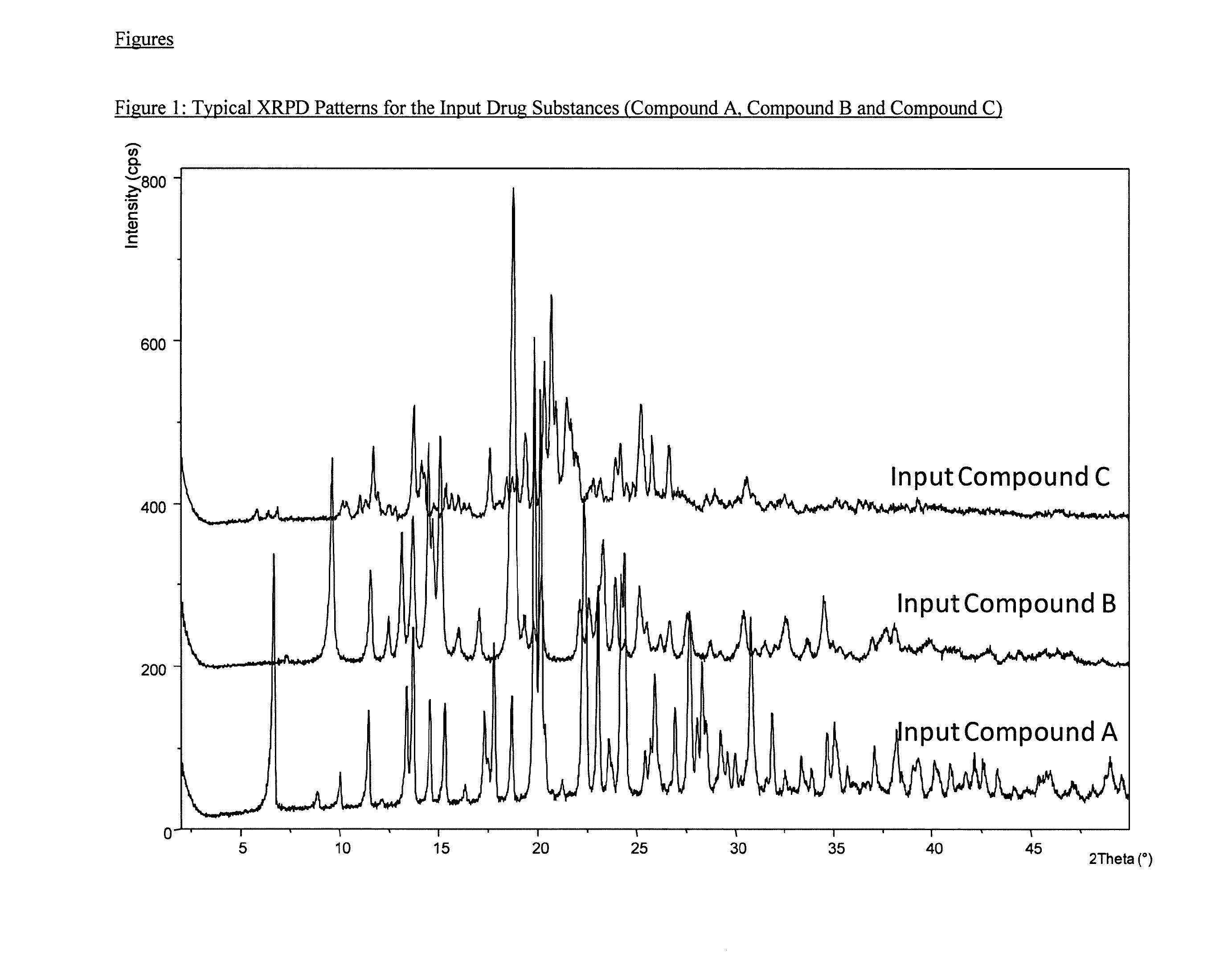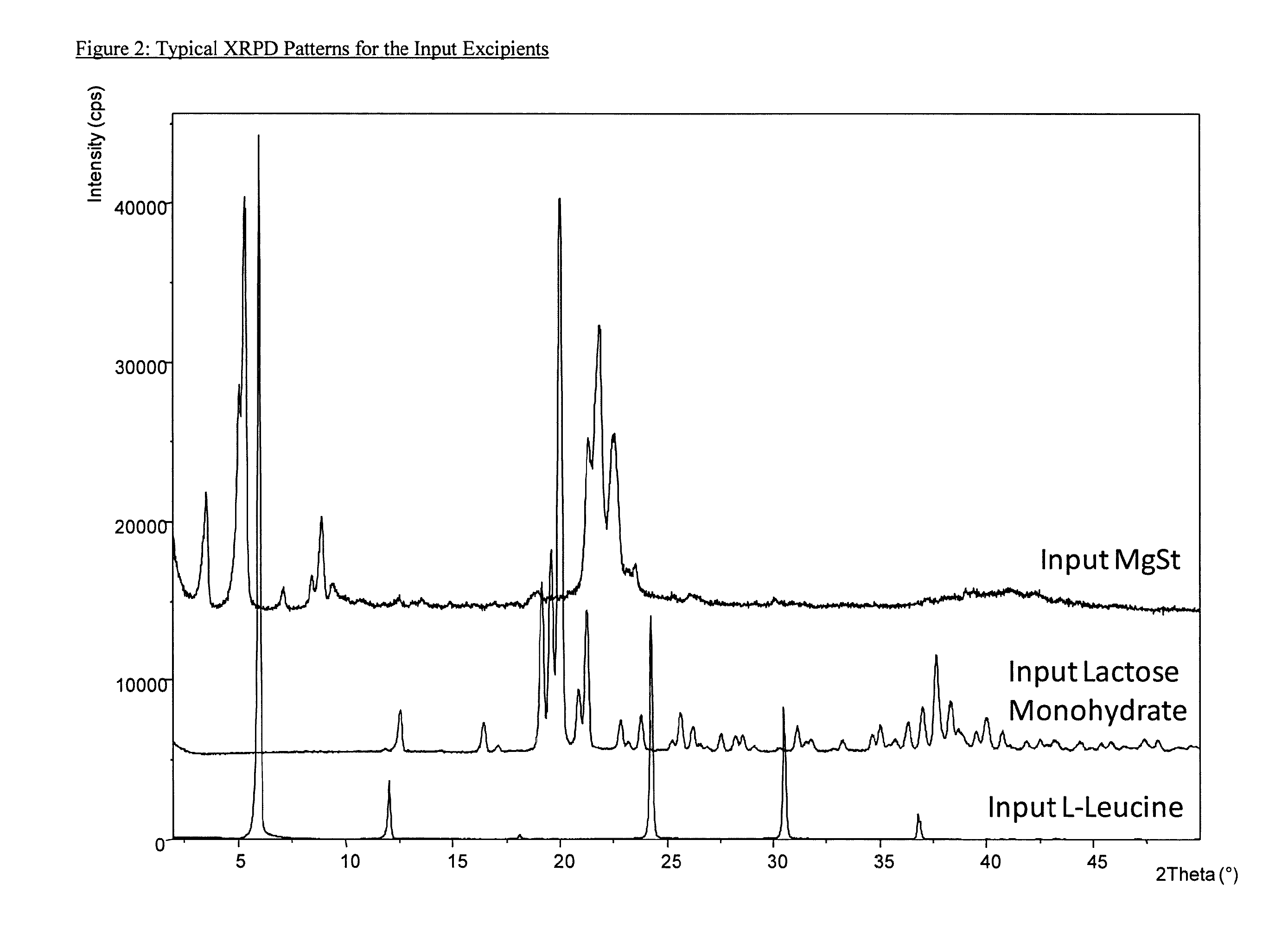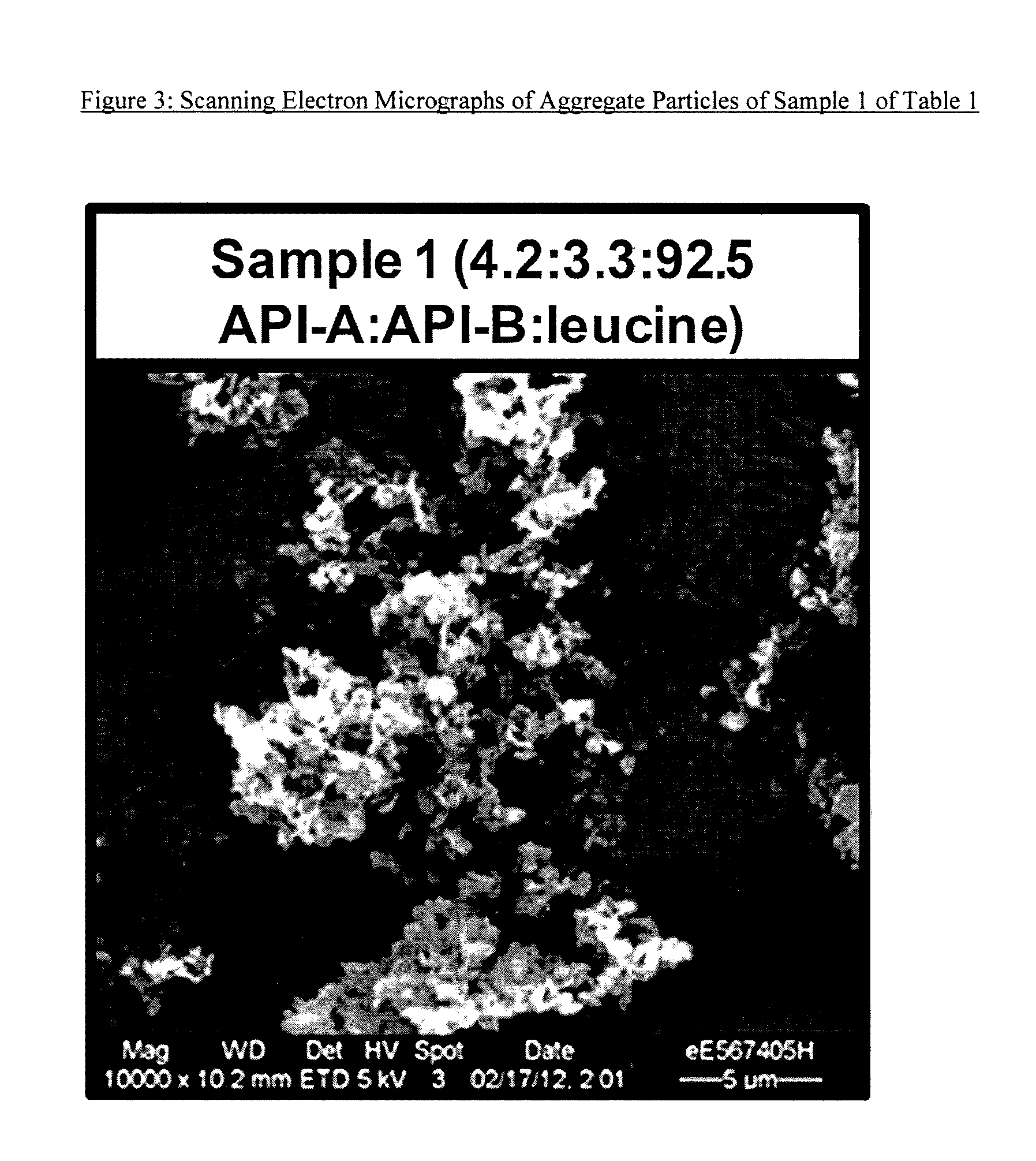Aggregate particles
a technology of aggregate particles and nanoparticulate particles, which is applied in the direction of application, aerosol delivery, pharmaceutical product form change, etc., can solve the problems of increasing the tendency of hygroscopicity, difficult control of solid state properties (particularly crystallinity), and undesirable polymorphic form of particles
- Summary
- Abstract
- Description
- Claims
- Application Information
AI Technical Summary
Benefits of technology
Problems solved by technology
Method used
Image
Examples
example 1
[0166]The purpose of this example was to demonstrate the technique of manufacturing three-component aggregate particles comprised of two different drug substances and an excipient. Sample 1 was comprised of Compound A, Compound B and leucine (Tables 1 and 4).
[0167]FIG. 3 displays a typical SEM micrograph of Sample 1 spray dried particles. Particles were generally irregular in shape.
[0168]FIG. 4 shows the XRPD pattern for Sample 1 after spray drying. This manufacturing approach maintains the preselected crystallinity of the input powders and produces substantially crystalline product. Table 10 lists the PSD results. The results suggested that these particles were within the respirable size range.
example 2
[0169]The purpose of this example was to demonstrate the technique of manufacturing three-component respiratory particles comprised of three different nanoparticulate drugs. Samples 2 through 5 were produced by bead milling APIs in different vehicles, then spray drying. An API content of 50% w / w Compound A, 40% w / w, Compound B and 10% w / w Compound C was targeted in the spray dried powder.
[0170]FIG. 5 displays typical SEM micrographs of Samples 2, 3 and 4. The spray dried particles were spherical to irregular in shape. Samples 2, 3 and 4 demonstrate how the shape of the aggregate particles may be influenced by the solubility of the APIs in the vehicle. Room temperature (22° C.) solubility measurements of the APIs in cyclohexane and in 25:75 and 50:50 mixtures of isopropyl acetate (IPAc):cyclohexane showed that the total percent of API in solution increased from 0.1% to approximately 0.8% when moving from a cyclohexane system to a 50:50 IPAc:cyclohexane system. During spray drying, th...
example 3
[0175]The purpose of this example was to demonstrate the technique of manufacturing four-component respiratory particles comprised of three nanoparticulate drugs, and a nanoparticulate excipient.
[0176]Samples 6 and 7 used a co-milling approach in which the drugs and excipient was bead milled together in isooctane. Sample 6 incorporated 92.5% w / w leucine in the spray dried aggregate particle, while Sample 7 incorporated 10% w / w MgSt. In both cases, the ratio of Compound A:Compound B:Compound C was maintained at 5:4:1 within the aggregate particle and the excipient content varied.
[0177]FIG. 7 displays typical SEM micrographs of the spray dried particles. The spray dried particles were spherical to irregular in shape. The PSD results (Table 10) suggested the spray dried particles were within the respirable size range. These results demonstrate how excipient may be easily incorporated into the aggregate particle across a range of concentrations while controlling the API content and rati...
PUM
| Property | Measurement | Unit |
|---|---|---|
| Diameter | aaaaa | aaaaa |
| Diameter | aaaaa | aaaaa |
| Diameter | aaaaa | aaaaa |
Abstract
Description
Claims
Application Information
 Login to View More
Login to View More - R&D
- Intellectual Property
- Life Sciences
- Materials
- Tech Scout
- Unparalleled Data Quality
- Higher Quality Content
- 60% Fewer Hallucinations
Browse by: Latest US Patents, China's latest patents, Technical Efficacy Thesaurus, Application Domain, Technology Topic, Popular Technical Reports.
© 2025 PatSnap. All rights reserved.Legal|Privacy policy|Modern Slavery Act Transparency Statement|Sitemap|About US| Contact US: help@patsnap.com



